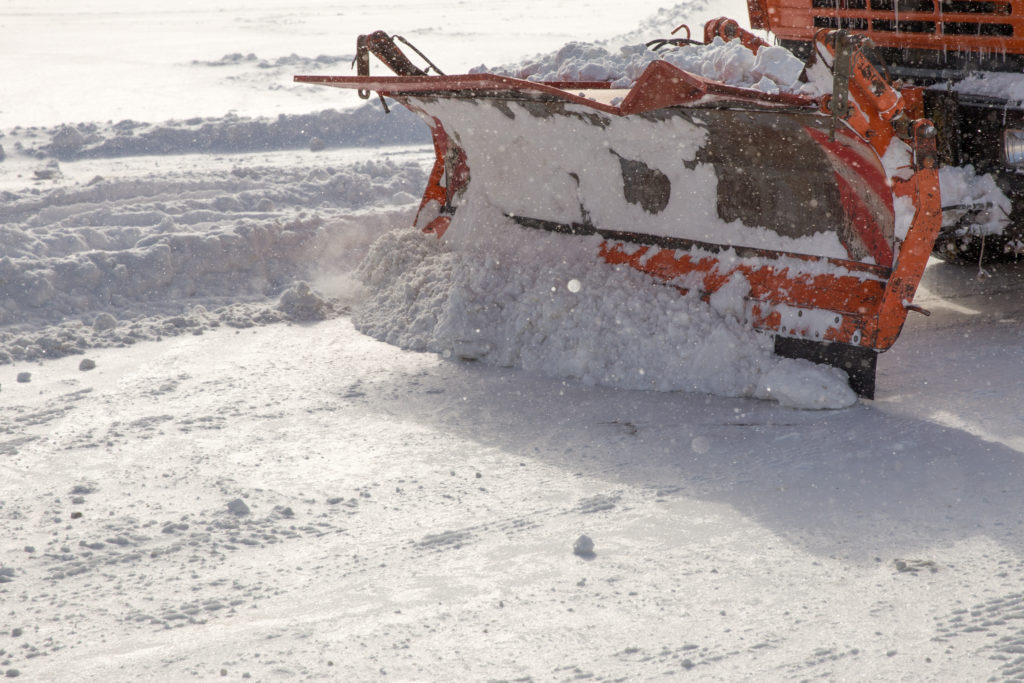Northern Roads Need to Accommodate Plows, Snow

Snow: the s-word, the white stuff, whatever you want to call it, we get a lot of it in our northern and mountain states, and it has to go somewhere safely as it gets plowed off our streets and highways. Roadway designers need to factor in elements that allow it to be kept safely off the roads until it can melt in the spring or be moved somewhere else. Five of our top strategies are:
Making room for it: Ditches in the country and the terrace between the road and sidewalk in towns and cities are usually the first place snow can be left by plows. We ensure there are adequate ditches in rural areas and that there is enough space between the curb face and sidewalk in urban areas for snow storage. Designing wider streets can also provide extra room for the snow.
Keeping it off the road: Designers may consider cutting back roadway slopes in low-cut areas to minimize drifting of snow onto the roadway. Situations where the road is lower than the adjacent terrain require back slopes (the slopes from the bottom of the ditch to the top). In certain situations, the back slopes will be made less steep to help minimize any drifting snow from filling in the ditch and ultimately getting onto the roadway.
Widening paths or sidewalks: On bridges we’ll often create wider multi-use paths to allow for snow removal equipment. Normally multi-use paths (or shared-use paths) can be as narrow as 10 feet, and sidewalks can be as narrow as 5 feet. On a bridge, however, concrete parapets located on both sides for pedestrian safety can get in the way of snow removal equipment, and sometimes we have to increase the width to 14 feet to allow city snow removal equipment to be able to clear the path.
Accommodating plows: Often, we’ll sit down with the maintenance authority for a city or county and decide what type of curb and gutter and configuration will best accommodate their snow removal equipment and operations (especially implementing features such as raised medians and triangular traffic islands at intersections). Reverse slope curb and gutter (gutter pan drains away from the curb across the roadway instead of towards the curb head) is usually avoided to prevent the melting snow from refreezing and icing over a live lane of traffic.
Maximizing crossover safety: We work with county maintenance to determine the best locations for median crossovers, as plows use these crossovers to make U-turns when clearing out an interchange area. They have to be placed in a safe location for sight distance and to allow time for vehicles to merge safely.
In addition to these five main design elements, we also recommend a few smaller things, like keeping trees farther away from the roadway so that shade does not slow the melting of snow and ice on the road. We also avoid using raised pavement markers that could be torn up by plows.
Every type of geography – mountains, deserts, wetlands, and more – brings its own challenges for road designers. Good communication with our clients and their maintenance staff leads to safe, efficient, and prompt snow removal, and that helps to keep northern highways safe in the winter.
Eric Sorensen, PE, is vice president of Midwest transportation operations at Ayres Associates, overseeing regional transportation and traffic engineering and transportation construction observation. Mark Petersen, PE, also contributed to this article.


Post a comment: